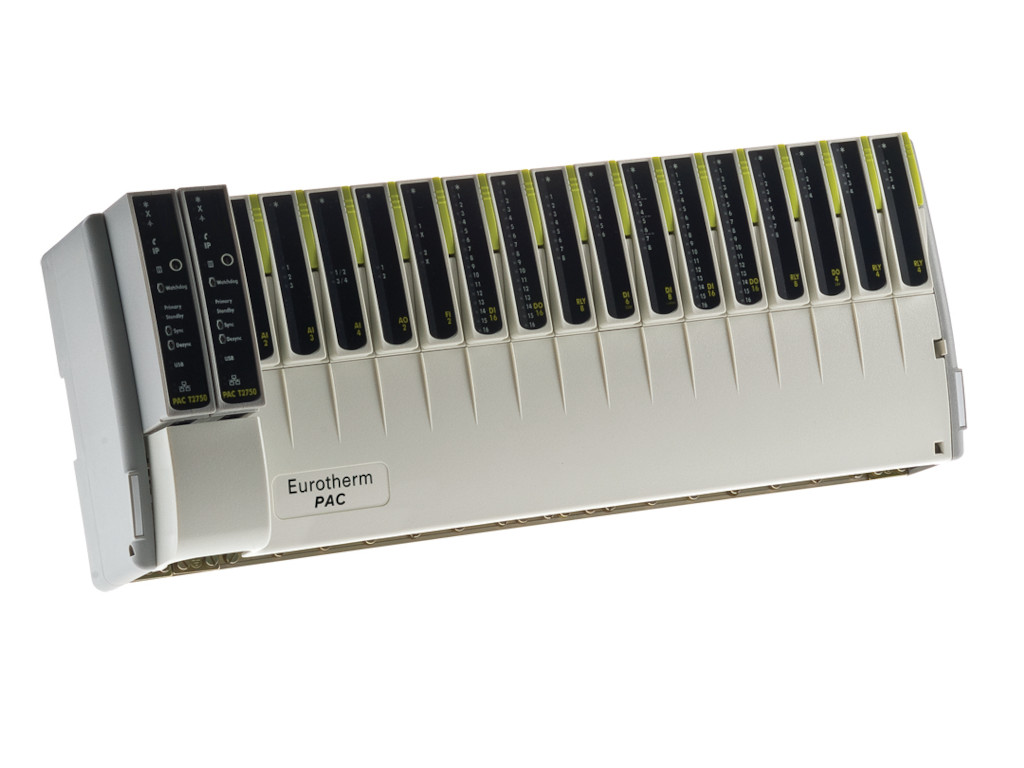Currently around 75 to 85% of CO2 emitted in glass production comes from fuel combustion in the melting process. Although alternative technologies such as hydrogen and biogas are currently being assessed, Eurotherm by Schneider Electric believes that in terms of technology readiness and availability, electrical melting solutions, including hybrid melting (using 50% to 90% electrical energy) make the most sense to address decarbonisation into the future. After all, electrical melting is already a proven and commonly used technology, suitable for scaling up for larger electrical melting systems.
With a long history in supplying advanced process and power control systems and services for electric melting/boosting applications, particularly for glass fibre, container and float glass furnaces, Eurotherm has the expertise and knowledge to support the glass industry with its transformation to greener glass production.
Data is key
To achieve the balance between sustainability and profitability, an important part of this transformation is to treat the process as a whole. Batch house, hot-end, forming, cold-end, quality, packaging, and warehouse can no longer be considered as separate systems, as they interact with each other and have an impact on the overall outcome. Controlling all parts of the process at the same time from end-to-end can improve the whole process. With the right infrastructure and actionable data, sustainability can be embedded in the entire production cycle, from supply chain management and glass manufacturing quality control to energy consumption and recycling.
Advanced process control strategies in Eurotherm T2750 PAC (programmable automation controller) together with AVEVA System Platform offer a scalable distributed control system (DCS) with built in redundancy and data acquisition, ideally suited to the glass industry’s continuous processes. The T2750 PAC I/O is ‘hot swappable’, so new or replacement modules can be plugged in without process interruption for easier maintenance. For predominantly digital applications such as batch house and cold end processes, the Schneider Electric IoT-ready Modicon PLC range can be utilised, also offering enhanced protection against new vulnerabilities across connected assets or in the cloud.
Digitalisation applies at all levels of a modern glass plant, offering real-time data analytics for effective decision making from the shop floor to the global enterprise. Schneider Electric’s IoT-enabled, open and interoperable architecture platform EcoStruxure, offers collaborative environments for connecting the field level to the enterprise level. From smart sensors, to DCS and SCADA, through to software/analytics and services, the EcoStruxure platform allows IoT-enabled solutions to seamlessly connect, collect, analyse, and act on data in real-time. Power distribution devices can also be connected to help improve asset utilization, minimise maintenance costs, and reduce unplanned downtime.
The traditional complexity of multiple data acquisition systems can result in inconsistent TAG names, time synchronisation and formatting problems. Therefore, Eurotherm considers the database to be one of the most important aspects of the whole manufacturing automation plant. As a solution, it offers a single collection, storage and analytics system to cover all processes, helping to simplify analytics for benchmarking and process quality enhancements.
With advanced control becoming more widespread in glass production to improve the performance of complex melting, fining, and conditioning processes, Eurotherm can provide model-based predictive control (MPC) from CelSian or GLASS SERVICE as part of its DCS. The build of these operational models does not usually require interruption of on-site processes. Integrating the results from MPC directly into the control process makes mathematical modelling knowledge accessible at the daily operational level, providing improved understanding, reliability and operational efficiency of glass processes.
Considering cybersecurity
Through its electrification and digitalisation services Schneider Electric provides cybersecurity solutions and ongoing services for industrial control systems. The T2750 PAC has Achilles Level 1 certification for communication robustness, helping to protect industrial processes from being compromised by cyber-attacks as part of a defence in depth strategy. Features include, password-controlled user access enhancements, and algorithms that can detect excessive network activity as well as help to ensure that a device’s resources are prioritised on the essential functions of the control and/or recording strategy.
Industrial cybersecurity services offered by Eurotherm include risk assessments, system architecture design based on a defence in depth approach, network monitoring, software/operating system patching and more.
Optimising power control
For electric-melting and -boosting applications, Eurotherm has developed water-cooled power supply boxes for controlling one or two pairs of electrodes (typically from 100kVA to over 1MVA). The compact design means these packaged power supplies can be located very close to the furnace to reduce line current and heat losses. As a result, smaller cables can be used leading to significant CapEx savings. For flexibility, multiple power supply boxes can be connected together to provide a scalable power supply with sufficient power redundancy to help enable continuous and reliable operation.
These power supplies as well as the distribution system can be optimised through modelling and simulation of their digital twin equivalents using software such as ETAP, which is now part of the Schneider portfolio. Renewables, microgrids, fuel cells and battery storage technologies can also be integrated into the power grid. Employing this ‘grid to glass’ design approach can result in CapEx savings of up to 20% and help to improve power grid resiliency and decarbonisation of energy transport and generation.
As a ‘one stop shop’ for control, Eurotherm by Schneider Electric offers comprehensive process control solutions that support the transition to environmentally friendly glass production, covering high efficiency power control and distribution, precision process control, redundant hardware configurations, consistent data storage, standardised operator interfaces, Model Predictive Control (MPC) and analytic tools, and most importantly, a global team that understands the electrification of glass processes.
Image: Eurotherm T2750 PAC provides high availability dual redundant process control, ideal for high efficiency glass manufacturing applications.


